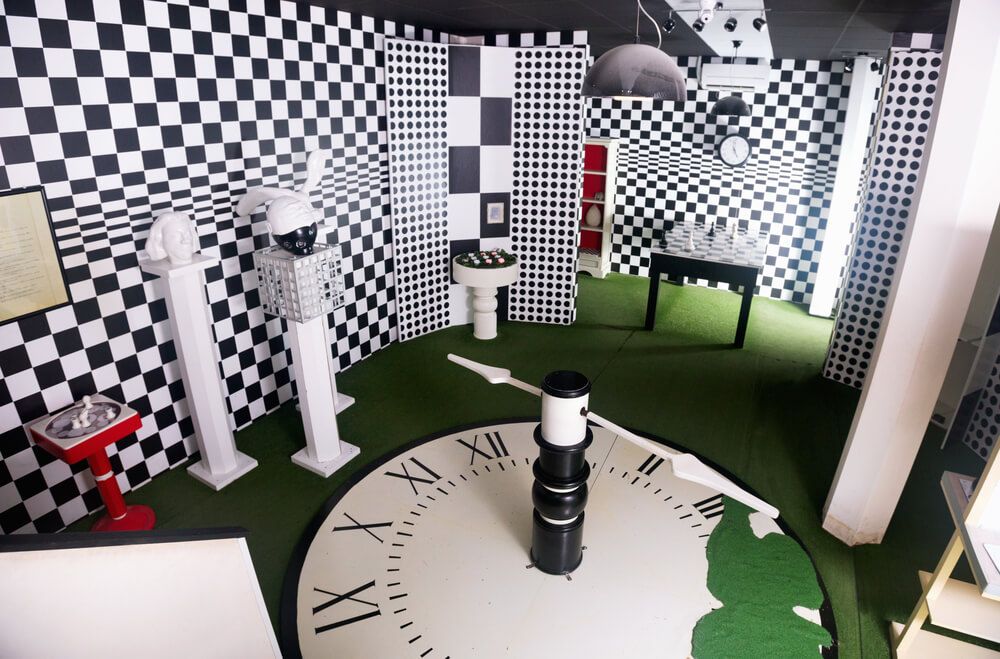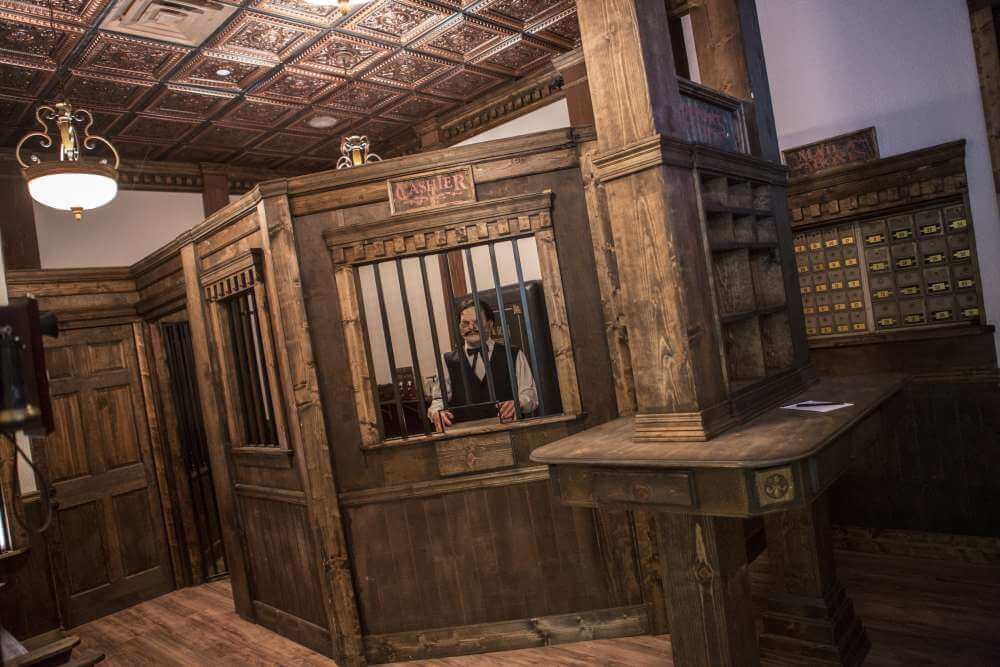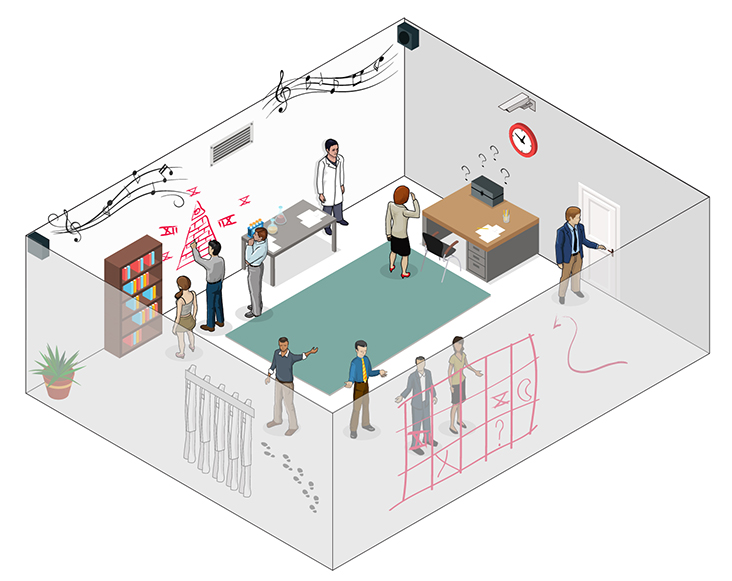Escape rooms have taken the world by storm, providing an immersive and thrilling experience for those who step inside. But have you ever wondered how big these rooms should actually be? Well, in this article, we will explore the optimal size for an escape room, considering factors such as player comfort, game design, and overall enjoyment. So, get ready to unlock the secrets of the perfect escape room size, as we take you on a journey through the world of immersive entertainment.

Factors to Consider
When designing an escape room, there are several factors to consider to ensure an optimal experience for players. From player capacity to room theme, physical obstacles, and the flow of the game, each aspect plays a crucial role in creating a memorable and exciting adventure.
Player Capacity
Determining the ideal group size
One of the first considerations when designing an escape room is the player capacity. Determining the ideal group size is vital to ensure that the room can accommodate the players comfortably. While some escape rooms cater to smaller groups of two to four people, others are designed for larger teams, ranging from six to ten individuals.
Balancing difficulty levels
Another factor to consider when determining player capacity is the balance of difficulty levels. A larger group may require more complex puzzles to provide an adequate challenge. On the other hand, a smaller group may find overwhelming puzzles in a space designed for a larger capacity, leading to frustration. Striking the right balance is essential for an enjoyable experience.
Managing overcrowding
While it can be tempting to maximize player capacity to increase revenue, it is crucial to consider the potential negative effects of overcrowding. A crowded space can diminish the immersion, create bottlenecks, and lead to a less enjoyable experience for players. Therefore, it is important to strike a balance between accommodating enough players without compromising the overall quality of the game.
Types of Puzzles
Space required for different puzzle types
The types of puzzles integrated into an escape room can greatly influence the space requirements. Some puzzles may require more physical space to set up, such as large-scale mazes or elaborate contraptions. It is essential to allocate enough room for these puzzles to ensure they can be properly implemented and enjoyed by the players.
Balancing complexity and accessibility
When selecting the types of puzzles to include, it is important to strike a balance between complexity and accessibility. Some puzzles may be more challenging and require advanced problem-solving skills, while others should be more straightforward to help beginners or less experienced players. By offering a variety of puzzle types, the escape room can cater to a wider range of participants and ensure everyone has a chance to contribute to the team’s success.
Integrating puzzles into the room layout
Integrating puzzles into the room layout is key to creating an immersive and cohesive experience. The design should consider how each puzzle fits within the overall theme and story of the room. By seamlessly blending the puzzles into the environment, players feel more engaged and immersed in the adventure.
Room Theme
Aligning room size with theme
The chosen room theme should align with the available space to create a cohesive and believable environment. A small, cramped room may not be suitable for a theme that requires expansive settings, such as a spaceship or an ancient temple. On the other hand, a larger space can be utilized more effectively for themes that require multiple rooms or a grand scale, such as a haunted mansion or a crime investigation.
Creating a believable environment
To enhance the players’ immersion, it is crucial to create a believable environment that matches the chosen theme. Details such as props, decorations, and sound effects should be carefully chosen and placed throughout the room. The space should evoke the desired atmosphere, whether it’s a dystopian future, a medieval castle, or a mysterious laboratory.
Utilizing space to enhance immersion
The effective use of space can significantly enhance the players’ immersion in the room. By strategically placing objects, designing hidden compartments, and creating interactive elements, the room becomes more engaging and encourages players to fully explore their surroundings. Utilizing the space in creative and innovative ways can elevate the escape room experience to new levels of excitement.

Physical Obstacles
Accounting for physical obstacles
When designing an escape room, it is essential to account for any physical obstacles that may exist within the space. These obstacles can include structural features, such as support beams or pillars, as well as functional components such as doors, windows, or staircases. By incorporating these elements into the gameplay and utilizing them as part of the puzzles, the room becomes more immersive and challenging.
Designing for mobility challenges
Accessibility should be a key consideration when designing an escape room. The space should be designed in a way that allows players with mobility challenges to navigate and participate fully. This may include providing ramps, ensuring doorways are wide enough for wheelchair access, and creating alternative solutions for puzzles that may pose physical limitations.
Ensuring safety and accessibility
Safety should always be a top priority when designing an escape room. The space should be free from any hazards, such as sharp objects or tripping hazards. Additionally, emergency exits should be clearly marked and easily accessible in case of any unforeseen circumstances. By prioritizing safety and accessibility, players can fully enjoy the experience without any unnecessary risks.
Flow of the Game
Considering linear vs. non-linear gameplay
When designing the flow of the game, one must consider whether to incorporate a linear or non-linear gameplay structure. A linear structure guides players through a predetermined sequence of puzzles, ensuring they progress through the storyline in a specific order. In contrast, a non-linear structure allows players to tackle puzzles in any order, promoting freedom and encouraging exploration.
Allowing for exploration and movement
To create an engaging experience, it is crucial to allow players the freedom to explore the space and move around. By providing ample room to move, players can fully engage with the environment, investigate clues, and interact with interactive elements. This freedom of movement encourages a more immersive experience and enhances the sense of adventure.
Avoiding bottlenecks and dead ends
When designing the escape room, it is important to avoid bottlenecks and dead ends. Bottlenecks occur when multiple players are required to solve a single puzzle, which can lead to frustration and delays in progress. Dead ends refer to situations where players reach a point where they cannot progress without additional information or resources. By carefully designing the flow and ensuring multiple pathways for progress, these issues can be minimized, allowing for a smoother and more enjoyable gameplay experience.

Optimal Size Range
Recommended square footage per player
While there is no one-size-fits-all answer to how big an escape room should be, industry standards and guidelines suggest approximately 15-30 square feet per player. This range provides ample space for players to move around comfortably, explore the environment, and engage with the puzzles without feeling overcrowded or restricted.
Industry standards and guidelines
Escape room designers and operators often adhere to industry standards and guidelines when determining the size of their rooms. These guidelines typically provide recommendations for the total square footage based on the intended player capacity. Following these standards ensures that players have enough room to maneuver and enjoy the game without feeling cramped or overwhelmed.
Flexibility for different room layouts
While industry standards provide a useful baseline, it is important to consider the specific requirements of the room layout and theme when determining the optimal size range. Some room layouts may require more space due to the inclusion of intricate props or unique gameplay mechanics. Designers should strive for flexibility, allowing for variations to accommodate different room layouts while still maintaining a comfortable and enjoyable experience for the players.
Budget and Constraints
Determining the maximum budget
When designing an escape room, it is crucial to establish and adhere to a maximum budget. The budget will dictate the resources available for space rental, construction, decoration, and puzzle creation. By understanding the financial constraints, designers can make informed decisions about the size and scope of the room, ensuring that the final product is both feasible and financially viable.
Adapting space requirements accordingly
The maximum budget will also impact the space requirements for the escape room. Based on the available funds, designers may need to adapt their plans and make adjustments to the desired square footage, the complexity of puzzles, or the overall scope of the game. Adapting to budget constraints allows for a more sustainable and realistic approach to creating an escape room experience.
Space-saving techniques and creative solutions
To optimize the use of space within budget constraints, designers can employ various space-saving techniques and creative solutions. These may include the use of multi-purpose props, cleverly designed puzzle integration, or utilizing vertical space with shelves or hanging objects. By thinking outside the box and employing resourceful strategies, designers can maximize the potential of the available space and create a captivating escape room experience.

Case Studies
Successful room sizes for popular escape games
Looking at case studies of successful escape rooms can provide valuable insights into effective room sizes. While each game varies in theme and design, analyzing player feedback and preferences can help identify trends and preferences. For example, some highly praised escape rooms have opted for smaller, more intimate spaces that create a sense of coziness and intensified interaction among players. Other successful rooms have capitalized on larger spaces to promote exploration and grand-scale puzzles.
Lessons from real-world examples
Real-world examples of escape rooms can offer crucial lessons for designers. These examples showcase how different room sizes can influence the overall gameplay experience. By studying these cases, designers can gain valuable knowledge of what works and what doesn’t, enabling them to make informed decisions when creating their own escape room experiences.
Customer feedback and preferences
Listening to customer feedback and preferences is vital in designing an escape room that meets the expectations of the players. Conducting surveys or gathering feedback from players after their experience can provide valuable insights into how the room size influenced their enjoyment and engagement. By incorporating player feedback into the design process, designers can continuously improve and adapt their escape rooms to deliver unforgettable experiences.
Testing and Iteration
Collecting data on player experience
To ensure the optimal room size, designers should collect data on player experiences. This can be done by monitoring players during gameplay, documenting their interactions, and surveying them afterward. By collecting quantitative and qualitative data, designers can gain a deeper understanding of how players engage with the space and puzzles, identifying areas for improvement or potential modifications.
Analyzing feedback to optimize room size
Once the data is collected, it is crucial to analyze the feedback and identify patterns or trends. This analysis can reveal valuable insights into how the room size affects player enjoyment and immersion. By understanding the impact of room size on the overall experience, designers can make informed decisions about optimizing the room size to create a more engaging and enjoyable escape room.
Iterating and improving based on observations
Based on the collected data and feedback analysis, designers can iterate and improve their escape rooms. This iterative process allows for continuous refinement and enhancement of the room size, layout, and gameplay elements. By implementing changes based on observations and player feedback, designers can ensure that each new iteration of the escape room offers an even better experience for players.
In conclusion, designing the perfect escape room requires careful consideration of various factors. From determining player capacity and selecting the types of puzzles to creating a believable environment, accounting for physical obstacles, and ensuring a smooth flow of the game, each aspect plays a crucial role in creating an immersive and enjoyable experience. By following industry standards, considering budget constraints, studying successful case studies, and continuously testing and iterating based on player feedback, designers can create escape rooms that captivate and delight players. So, how big should an escape room be? The answer lies in finding the right balance that allows players to fully engage with the space, explore their surroundings, and solve challenging puzzles, all while immersing themselves in a thrilling adventure.
